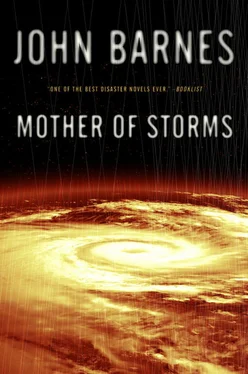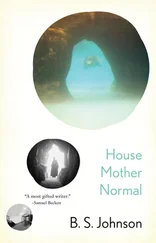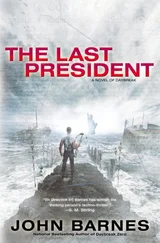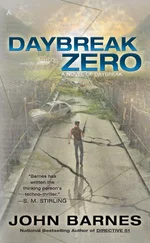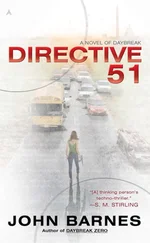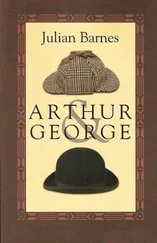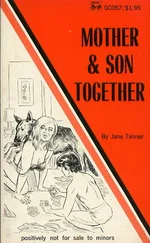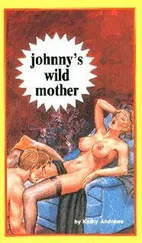The great white eye, crawling across the Pacific, comes to us as a series of pictures, radar, infrared, visible light, and as a series of instrument maps, overlaying and flexing, and as this happens, Louie’s voice in Mary Ann’s mind speaks rapidly, just at the edge where her throat and lips can keep up with him, explaining what it is that is being looked at, how the great spot of low pressure moves heat from the too-warm oceans into the upper atmosphere. Then suddenly we see it from a plunging disk of ice, one of the Frisbees Louie has been throwing in their billions, to which he has—attached a camera? Is he simulating this? She has no way to know or ask and it’s probably not important.
The great white mass wobbling in the Pacific draws nearer and nearer, and then there is a moment of flashing heat as the Frisbee vaporizes in the upper atmosphere, a blurring instant as thirty miles of ocean and storm below flick across the point of view before the camera flicks off. The image is brought back again, and we see the long, straight white shadows everywhere; and then we pull back to see the vast stream of Frisbees on the way… and we feel the scale of the shadow being woven of ice crystals, like jet contrails forming a gridwork umbrella over the Pacific.
The images flicker and dissolve again, and Mary Ann is distantly aware of a low moan running through the crowd. It sounds like people at the county fair, back in West Virginia when she was a kid, watching the fireworks and reacting to the sudden wonderful bursts of color. She wonders if out in the electronic world there are a billion “oohs” resounding, and very quietly Carla assures her there are— You would be surprised at how many people have never thought of their home world as a planet; we are getting indications through the marketing feedback servers that people had never thought of the air as thin before, or realized that everything that lives, lives within six miles below or six miles above sea level. And at another whole set of minds reeling with the awareness that a planet is big….
Now Louie backs them up and tells them the story of the event from the methane release forward. They see the heat accumulate, watch as the sky becomes all but opaque to the infrared wavelengths, see the Pacific warming…
And then suddenly it is no longer about the storm; a part of Mary Ann, hearing the words she is speaking, makes the long leap of intuition just as Carla takes over for Louie in the narration. That little lurch lets Mary Ann get a momentary glimpse and see apparent-depth screens forming a hexagon around Building J, and transparent only to Mary Ann, so that everyone sees into one screen with full depth, and sees Mary Ann inside it. She didn’t know they could do that with holograms—
Not till now, Louie says, with a warm chuckle in her mind. Had to develop physics quite a bit to do it, in just this last hour. Helps that you and your clothes aren’t too close to the stone or the sky in color. Now don’t worry—we’re going onward….
The story shifts again, and Carla takes them through human history—everything since Homo sapiens burst out of Africa—six times, one after another:
First we see humans squabbling and fighting, understand that among the first tools were the ones for killing each other, watch as the quarrelsome species spreads across the Earth, endlessly dividing itself into smaller and smaller segments of faith and language and endlessly finding in those self-made divisions a reason for butchering each other. We see the tools of butchery improved constantly, not just in cutting and puncturing screaming flesh but in organization and planning, so that the making of corpses becomes ever more efficient on an ever bigger scale. Nor is this made a tale of horror—or not entirely—for the images that flicker by share in the pleasures of this as well, the release from the boredom of daily work and slow accumulation of goods to a world where furor rages unbounded, where bodies are there to be cut, hurt, raped, where there are only victims and brutes and to know that one is a brute is an orgasm. The resources needed to do the job are grabbed from everywhere, torn from below the ground, cut out of the forests; whatever is needed for more slaughter is taken and turned to the purpose, and on that great flow of matériel all of human economy is founded, so that humanity grows ever more rich as it falls ever more deeply into danger. The moment that brings us to the present, where the Earth itself can no longer contain the drive for slaughter, where the endless exultation of violence is on the brink of sending the system hurtling down into a collapse of life itself….
And then, suddenly back to Africa, to see the story again, and this time we see humans making, creating, changing, ceaselessly taking the useless and random stuff of nature and turning it to beauty and use, the turning of the planet from a place where not more than fifty million human beings could live into one where billions live in comfort, from one where thoughts were barely more than images of the next day’s hunt to one filled with stories and pictures, to a world alive with meaning where before there was only incoherent silence, until again the sea erupts with methane, and the world has reached the point where—like a whale caught in thin bindings of nylon that weigh only a tiny fraction of what it does—nature is inside meaning; the organization of the world has reached around and become the world, and from here on—
The story begins again. Humans go over the next hill, and there is new land; some stay to turn it into a place, and others go over another hill, and another. Each place found is finally made into a place encompassed, known, and understood—and then escaped from—partly to return with new eyes, and partly just to see the new. Finally, they all see through Louie’s eyes as they walk the empty iron sands of Mars, and then look out into the heavens and see the cryogenic stormworlds that circle the gas giants, and beyond that, the near-absolute-zero balls that hang in the void on a tether of thin gravity, the comets of the Oort Cloud… and beyond that, the stars….
The story begins again. Human beings learn the secret of separating labor from laborer, and then of binding the energies of nature, and then the conquest extends until—
The story begins again. Nature, pure and sweet, is slowly eaten and fouled—
The story begins again. And again, and again, and as each is told, Mary Ann—and the billion people who are living through her—feels each of them to be true, the way that things really happened, until finally….
The truth is that every story finishes. Every one of these tales will find its way to its end, some as comedy and some as tragedy and some merely as a thing that happened. Yet some are more true than others; to see the world as a fall from purity into corruption, one must first learn to imagine a nature that never was, to paint over the real, blind, struggling, merciless, meaningless chaotic surface with smooth Disney technicolor that puts big eyes onto herbivores and bushy immigrant eyebrows onto the predators. To see the world as a quest to go over the next hill, one must first learn to ignore the vast uncountable number of human beings who by choice never go anywhere, to focus on the lone misfit who can’t stay home and to ignore all the things people do so that we can look at a man sticking out against unclaimed land like an old-time actor against a painted backdrop….
There is no lens that doesn’t distort, no two lenses that can be true at once, and yet some distort less than others; and yet, again, however much the story and the picture might bend, seen through any of them, the story will finish in all of them.
And finally, with that understood, there comes the rest of the story, but unlabeled and meaningless, except that Mary Ann sees how it fits into the end of all the stories, like a plug into a socket, as if it were made for it.
Читать дальше
